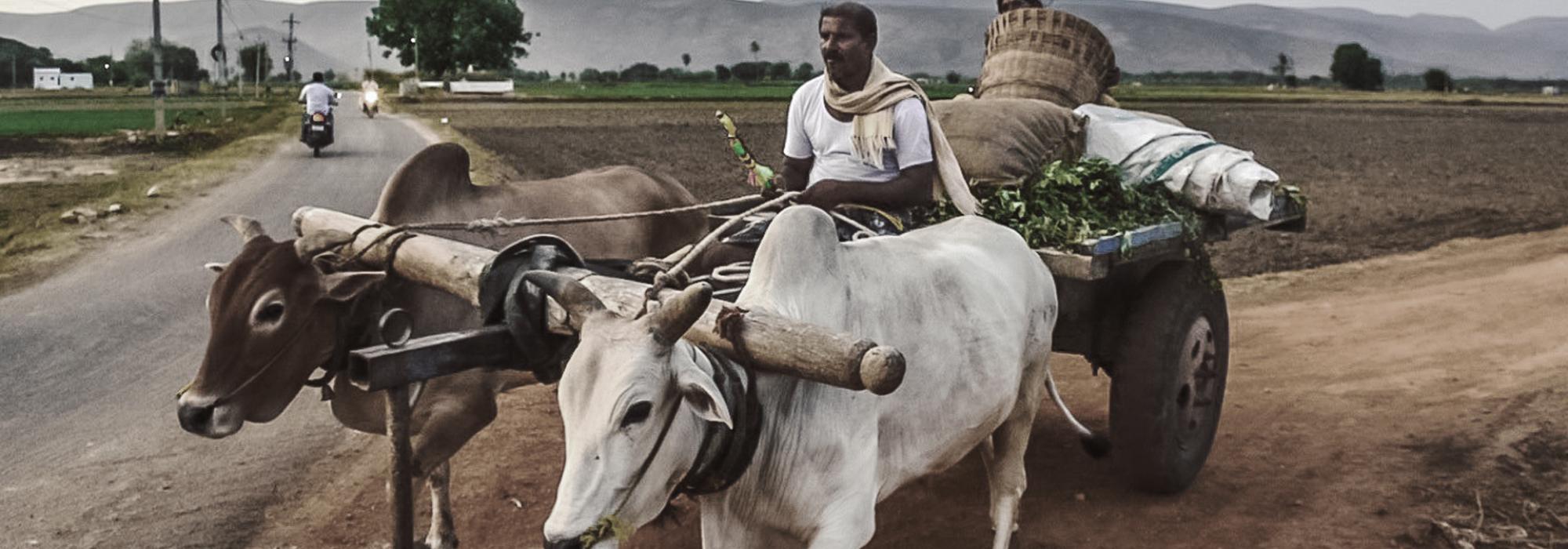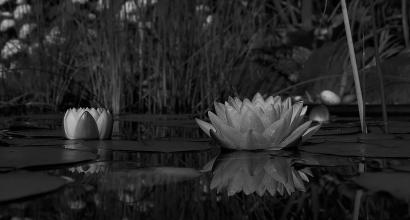I have passed two examinations in my life. One is the Lower Secondary[1] in Kannada. That was probably in 1898–99. At that time, there was no English [medium] school in our town. The second examination I cleared was the Lower Secondary in English, which was was probably in 1900. That is altogether a different story.
After finishing the English Lower Secondary, came the plan for further studies. No one in our house was particularly enthusiastic about that. My grandmother was totally opposed to sending me out of town for studies. “The child in front of my eyes should remain in front of my eyes, as long as I am alive” – was her obstinate stance. My grandfather had died recently. Hence we would experience financial shortfall in running the family. In those days, sending money to another town was a difficult task. Food grains were delivered home. So even if there were ten guests for dinner, we could serve them without any worries. Money was a different matter. Therefore my great uncles were hesitant.
My father’s mind was vacillating, caught in a dilemma. The situation at home was this – [People said,] “Enough of schooling! What’s the point of him pursuing further education? Let him engage in study [of the scriptures]. Let him learn Sanskrit.” – This was one faction. The other faction was that of friends – “We should somehow get him to pursue further education. He should learn English!” This was the friends’ group.
Among the friends’ group, an important person was Rasūl Khān Saheb.
Rasūl Khān was also called ‘Baṇḍi Rasūlgāḍu.’[2]
He was illiterate. Along with his Hindustani, he also spoke Telugu well. He knew Kannada as well. His enthusiasm with regard to me was due to an exaggerated notion. I am extremely intelligent; if I learn English, I can progress and grow – was his illusion. “Even without knowing an alphabet of English, he was able to pass Lower Secondary within two years!” – This was the cause of astonishment in those people.
Rasūl Khān lived with his father and younger brothers. They had a small piece of farmland. The cultivation of that land was their primary source of food. Along with that Khān drove a bullock cart on rent.
Mulbagal is on the 60th milestone when travelling from Bangalore to Madras. Upon entering the road leading to the town, turning south, and proceeding for two furlongs, you find Someshwarapalya. There was an open ground on the eastern side of the road leading to that town. In that open ground there were three to four gigantic tamarind trees. In between those trees was an old mud shack, which was Rasūl Khān’s house.
Rasūl Khān’s main profession was performing namāz. He performed it five or seven times a day. Every time he would take a bath before the ritual. His outfit: a small dishevelled cap, a dress with square pattern design covering his body. This was his attire. If it was too cold, he would wear a woollen shawl or a jamakhāna [blanket].
Thus, although the chap was poor, he was decent. Along with his good nature, he had an innate humorous temperament. He would talk to everyone cheerfully with mirth. Hence he was liked by all.
In the aforementioned Someshwarapalya, there lived an eminent householder by name Māraśeṭṭi. He belonged to the baṇajiga[3] community. His profession was teaching in a Telugu school. He was radiant in appearance. He had stayed in Mysore at his kulaguru Vèṅkaṭācārya’s residence for some time and studied English up to his Matriculation[4]. He was well-mannered and respectful in conduct. The townsfolk admired him greatly. In case of any conflict or quarrels, people would approach Māraśeṭṭi for counsel. He was tolerant and courteous.
He and my father shared a deep friendship. Those in this circle of friends included Subbābhaṭṭa, Rāmacandrācārya, and so forth. Rasūl Khān was a part of this group.
My Future
When this friends circle got together, my future came up for discussion. My father said that studying outside our town was not an option for me. The opinion of the others swayed this way one moment and contrary to it the next moment. Rasūl waited till everyone had discussed and finally gave his judgement – “You people say anything you wish. But this boy must be made to study. I shall do everything possible by me. I don’t know what you’ll say – every Saturday I ride my cart to Robertsonpet. From there Bowringpet is three to four miles. I will take this boy in my cart to Bowringpet railway station, purchase him a ticket to Bangalore and give him a rupee for pocket money. Let him study there even by collecting garbage. But his studies must progress.”
Everyone was astounded listening to Rasūl Khān’s words. “Why is he so obstinate? He has not learnt a letter of alphabet in his life. And his house is struggling for daily bread. What kind of nerve is this?” said a few. Rasūl Khān kept his palm on his heart and said, “Something here is telling me – do this!”
I set off on my journey the following Saturday.
During those times, the gold mine [at Kolar] was a major market hub. There was a santè [weekend market] every Sunday near Robertsonpet. A big santè. Tens of thousands of people came there and purchased for their family a week’s worth of rice, pulses, and rāgi among other groceries before returning. To sell their grocery in this market, traders would bring it from Mulbagal.
These packed carts would travel in groups of eight to ten. They would leave at around ten at the night on Saturday. They would reach Robertsonpet at around five on Sunday morning.
That journey was, for me, a source of great delight. The cart had neither cushions nor a mattress. The sacks of rice and pulses were stiff and rigid. Along with that the stifling space; there was no place to even move the limbs. In spite of all this, the songs of the bullock cart drivers, their stories, and chit-chat – they made us forget the tedium of the journey.
Caṅgappa
Caṅgappa was one of the seven or eight cart drivers. He hailed from Someshwarapalya. He was probably related to Māraśeṭṭi. He would sit on the front ledge and drive the bullocks. After leaving town and travelling for one or two miles, at around eleven or twelve at night, he would begin singing, for his own enjoyment. It was a time of a cool spell, when the dust had left the atmosphere and settled on the ground. The melody flowing from the vocal chords in such a serene ambience pervaded far and wide. This was our Caṅgappa’s singing.
When the name of Baṇḍi Caṅgappa comes up, it is but natural that the name of his sister Caṅgamma comes to the surface of my memory. She was a charismatic young woman. To support her husband and her family she delivered milk to one or two households. And so, she came to our house every morning, day after day – when we could not get our cow to give milk or when the milk was not sufficient. When she was a young girl it was a delight for me to see her. Her forehead full of vermilion. Saree draped around her body. Immaculate in her appearance. Extremely courteous in conversation. A majestic lady. The reason I’m describing it in this context is to demonstrate how goodness in demeanour and gentleness in conduct does not [necessarily] come from great wealth; it comes from an inner saṃskāra (cultural refinement). I have seen the families of a few affluent people. I have wondered – god hasn’t gifted them even a tenth of the purity and geniality of the poverty-stricken Caṅgamma!
Song of Dawn
Caṅgappa’s singing at the break of the dawn while driving his bullock cart was melodious. I had mentioned how it would float with the breeze and flow a long way. I’ve heard his singing two or three times. His song was set to a rāga. And rāga implies rañjanā (entertainment). A sound that cannot entertain – can anyone call that a song?
Caṅgappa’s was singing in the true sense. It was a natural, joyous flood that flowed out of his heart. But it was an impossible task to identify the rāga using the characteristics laid out in the Svara-meḻa-kalānidhi[5] [or some other musical treatise]. When I heard Caṅgappa’s singing, I did not know the names of the rāgas. I was not capable of identifying them.
When I enquired of the elders travelling with me, they posed a counter question to me and shut my mouth saying, “What’s the use of the rāga name to you? Isn’t it sweet to your ears? Does it make you feel like listening to it for longer or not?” I surmise now that he would blend three or four rāgas of dawn such as Bhūpālam, Regupti, and Sāverī.
“Eru kāḍu topulona” – I remember just these words. An incident had occurred in a farmland on the banks of the river. He would narrate that musically for a minute or two. People around him would grasp the context and laugh. Then again the song resumed. The boredom of the journey would not be noticed and the way would be covered.
Now let us go back to the discussion about Rasūl Khān.
Sacrifice of Selfishness
As per his promise, Rasūl Khān carried me and my luggage on his cart. By then my father had arrived at a decision. He travelled in another cart [accompanying me on the journey].
We reached Robertsonpet. Then we took a train from there to Bowringpet. And then further ahead, we reached Bangalore. The story of the period after reaching Bangalore is not our concern in this context.
My present objective is to show the mindset, spirit, and determination of Rasūl Khān.
A person like Rasūl Khān in today’s time—i.e., 1971—is extremely rare. Seventy years back, that wasn’t the case. Typically, in each of our towns, there were two or three such personalities. And there were a dozen more, who understood their noble intentions and voluntarily supported them with a good heart. Money wasn’t easy to come by. A noble objective, a helping mindset, and the sacrifice of selfishness needed for that came spontaneously and naturally to them.
This is the sixteenth essay in D V Gundappa’s magnum-opus Jnapakachitrashaale (Volume 7) – Hrudaya Sampannaru. Edited by Hari Ravikumar.
Footnotes
[1] An equivalent of today’s eighth standard.
[2] A respectful form of address.
[3] A sub-sect of the liṅgāyata community.
[4] An equivalent of today’s eleventh standard.
[5] A treatise on music written by Rāmāmātya (c. 1550).











































